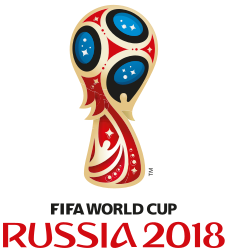Stock market basics
The stock market is made up of exchanges, like the New York Stock
Exchange and the Nasdaq. Stocks are listed on a specific exchange, which
brings buyers and sellers together and acts as a market for the shares
of those stocks. The exchange tracks the supply and demand — and
directly related, the price — of each stock. (Need to back up a bit?
Read our explainer about the ins and outs of stocks.)
But this isn’t your typical market, and you can’t show up and pick
your shares off a shelf the way you select produce at the grocery store.
Individual traders are typically represented by a broker — these days,
that’s often an online broker. You place your stock trades through the
broker, which then deals with the exchange on your behalf.
The NYSE and the Nasdaq are open from 9:30 a.m. to 4 p.m. Eastern,
with premarket and after-hours trading sessions also available,
depending on your broker.
Stock market indexes
When people refer to the stock market being up or down, they’re
generally referring to one of the major market indexes. A market index
tracks the performance of a group of stocks, which either represents the
market as a whole or a specific sector of the market, like technology
or retail companies.
You’re likely to hear most about the Standard & Poor’s 500, the
Nasdaq composite and the Dow Jones industrial average; they are often
used as a proxy for the performance of the overall market. Investors use
indexes to benchmark the performance of their own portfolios. You can
also invest in an entire index through index funds and exchange-traded
funds, which track a specific index or sector of the market.
Algorithmic Trading Strategies
Arbitrage
The first type of algo trading strategy that we'll talk about is an arbitrage strategy. Arbitrage strategies use price differentials to generate risk free profit. Although these price differentials don't appear often, an algorithm will monitor the market for you. It not only saves time but also executes during the short time window that they're available.
One example of an arbitrage opportunity is a differential appearing between the spot price and a futures/option price for a currency pair.
Trend Following
Another type of popular algorithmic trading strategy is a trend following strategy. Trend following strategies involves algorithms monitoring the market for indicators to execute trades. These trades normally use technical analysis with chart patterns and indicators to make decisions. These algorithms are popular because of their relative ease of design and use compared to other algo trading strategies.
Some of the technical analysis that this strategy might use can be anything from oscillators and indicators, to using moving averages and mean reversion.
Execution Based Strategies
The last type of algorithmic trading strategy is related to execution-based strategies. These are the type of strategies that institutional investors make when executing large quantity orders. These types of strategies use various methods in order to make the most stable purchase possible. For example, you can break up the purchase in terms of volume or time.
Bull markets vs. bear markets
Neither is an animal you’d want to run into on a hike, but the market
has picked the bear as the true symbol of fear: A bear market means
stock prices are falling — thresholds vary, but generally to the tune of
20% or more — across several of the indexes referenced earlier.
Younger investors may be familiar with the term bear market but
unfamiliar with the experience: We’ve been in a bull market — with
rising prices, the opposite of a bear market — for over eight years.
That makes it the second-longest bull run in history.
It came out of the Great Recession, however, and that’s how bulls and
bears tend to go: Bull markets are followed by bear markets, and vice
versa, with both often signaling the start of larger economic patterns.
In other words, a bull market typically means investors are confident,
which indicates economic growth. A bear market shows investors are
pulling back, indicating the economy may do so as well.
The good news is that the average bull market far outlasts the
average bear market, which is why over the long term you can grow your
money by investing in stocks.
The importance of diversification
The above statement is true about a diversified portfolio — the
S&P 500, which holds 500 of the largest stocks in the U.S., has
historically returned an average of around 7% annually, when you factor
in reinvested dividends and adjust for inflation. That means if you
invested $1,000 30 years ago, you could have around $7,600 today.
That long-term growth would have happened despite several bear
markets, which you can’t avoid as an investor. What you can avoid is the
risk that comes from an undiversified portfolio. Individual stocks
frequently fizzle to a lifetime loss of 100%, according to a recent working paper by Arizona State University professor Hendrik Bessembinder.
If you throw all of your money into one company, you’re banking on
success that can quickly be halted by regulatory issues, poor leadership
or an E. coli outbreak. To smooth out that company-specific risk,
investors diversify by pooling multiple stocks together, balancing out
the inevitable losers and eliminating the risk that one company’s
contaminated beef will wipe out your entire portfolio.
But building a diversified portfolio of individual stocks takes a lot
of time, patience and research. The alternative is the aforementioned
ETF or index fund. These hold a basket of investments, so you’re
automatically diversified. An S&P 500 ETF, for example, would aim to
mirror the performance of the S&P 500 by investing in the 500
companies in that index.

